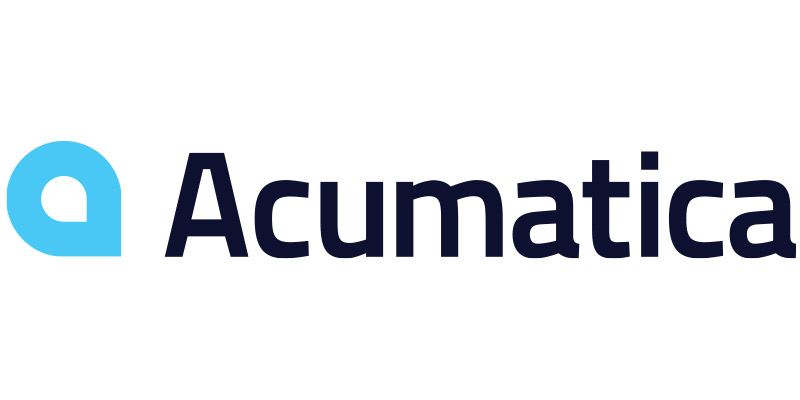
For every ERP solution on the market, there is another that is similar enough to stump companies on the right choice.
As each has their advantages and disadvantages, it is important to understand the differences between them to make an informed decision that will be the right choice for your company, now and for the future.
For organizations that have been attempting to decode the differences between Acumatica and NetSuite, we’re here to decipher the confusion through key characteristics, pricing, and features to get you where you need to be.
NetSuite ERP has been around for decades and has really established itself as a top player in ERP software. Its ability to scale offers businesses the opportunity to start small and grow at their own pace with built-in functionalities, such as, CRM, finance, project management, and specific industry verticals.
Request More Info About NetSuite vs. Acumatica
Acumatica, on the other hand, provides very similar functionalities; however, it also offers on-premise solutions alongside its cloud-based offering. NetSuite, as consistently advertised, is only based on the cloud.
In terms of licensing, Acumatica runs on a licensing model that is based on required resources, whereas NetSuite has a per-user price with a base pricing model.
Let’s take a deeper look at the ERP comparison between two solid systems.
Core Business Processes: NetSuite vs. Acumatica
Each ERP has their own way of managing their core operational processes from program language to architecture functionality.
NetSuite ERP
Thanks to an infrastructure that consolidates business processes, users have access to a large collection of tools from CRM to marketing. For companies that require a bit more, NetSuite’s integrated solutions are crucial for industry-specific development.
Flexible and streamlined to ensure a single source of truth, Oracle NetSuite provides real-time information anytime and anywhere.
Fit for all businesses and all industries, companies can feel at ease knowing their current system will make the most impact with low cost. This is partly due to the preconfigured option (SuiteSuccess) that can be customized as time goes on.

That being said, NetSuite’s internal design means users can update, personalize, add, delete and make changes with little to no issues.
NetSuite has its own programming language called SuiteScript that runs the programs and ensures a unified database management system.

Acumatica
Available to most industries, Acumatica’s business process automation helps companies transform their backend into high-level digital and automated systems.
It’s a dream for sales teams as the embedded customer relationship management (CRM) platform with case management, workflows, and analytics solidify the sales process.
As an accounting software it follows tax compliance rules whether regional or international, with advanced analytics to help make global companies make better decisions. Not to mention, the multi-entity and multi-currency tools.
Easily integrate with other cloud-based applications and never worry about inputting manual data. All is automated with batch processing and integrations.
Programming language is based on C# and .NET, which makes the development less exclusive and more adaptable.

![]()
Acumatica Benefits
- Customizable Platform
- Flexible Pricing Model
- Available On-Premise or Cloud
- Solid Reporting
- Personalized dashboards
- Out-Of-The-Box Solution
- Industry-Specific Modules
![]()
Acumatica Drawbacks
- Heavy Reliance On External Add-Ons
- Difficult Estimating License Costs
- Challenges With Sales And Manufacturing Integration

![]()
NetSuite Benefits
- Highly customizable
- Powerful Integrations
- Wide Variety of Features
- Business Intelligence Tools
- Simple User Interface
- A Full ERP solution
- Real-Time Data Visibility
![]()
NetSuite Drawbacks
- High Price For Small Businesses
- Long Implementations
NetSuite vs. Acumatica: Feature Overview
What does each ERP system offer? Do they have the necessary components that you require to grow your business? These are the questions that you need to answer before making any decisions.
Based on popular features, here is how Acumatica and NetSuite differ and where they are similar.
![]()
Financial Management
When first starting out the search for the perfect ERP, most professionals will analyze the financial management capabilities. It is, after all, the core of any operation.
Both Acumatica and NetSuite have strong tools to manage accounting, finance, taxes, and compliance.
In fact, between the two systems, you will have access to accounts receivable, accounts payable, financial planning, forecasting, automation, multiple currencies, and efficient reporting and analytics.
NetSuite is the superior choice thanks to its easy implementation, intuitive software, and efficiency.
![]()
Customer Relationship Management (CRM)
Like finance is at the heart of operations management, customer relationships are what make or break a company. Having a process that ensures satisfaction is life changing.
NetSuite CRM has everything that is needed to build on strong customer relationships: sales force automation (SFA), analytics, marketing automation, and lead generation, are among the features available.
Users can take advantage of collaboration tools in order to keep track of customer relationships, partners and suppliers across different channels.
Its mobile accessibility means staying in touch with important clients wherever you are.
Acumatica’s CRM solution is similar in that it offers a complete 360-degree view of all business processes. Embedded artificial intelligence and machine learning technology increases customer satisfaction while improving automated business processes.
Acumatica users can create service orders from inbound leads, schedule appointments, and automate campaigns.
It’s hard to compete with NetSuite’s CRM capabilities, they’ve been known to be top of the market. Users praise the flexibility, reporting, and ROI tracking capabilities, all while feeling at ease with the platform.
![]()
Supply Chain and Inventory Management
There’s a reason why certain industries race to implement NetSuite’s inventory management tool. Tracking inventory across multiple locations and channels is done with extreme proficiency
Features include optimized inventory levels, increased profitability as well as costing and depreciation methods: First-In-First-Out, Last-In-Last-Out, average cost, standard cost, and average group cost.
Acumatica cloud ERP also provides users with an inventory management solution, which clients can manage across different locations. Similar features include costing and depreciation methods for inventory prices. However, unlike NetSuite, Acumatica lacks the support for the Last-In-First-Out method.
Based on features and solid inventory cycle management, NetSuite inventory management is the top solution for companies in need of inventory control.
![]()
Reporting and Analytics
NetSuite’s SuiteAnalytics is the ultimate data analytics tool to provide users with the flexibility and insight to stay ahead of the curve.
It has built-in KPIs, searches, real-time reports, dashboards with actionable insights and real-time analytics.
Very similarly, Acumatica’s advanced reporting and analytics is ideal for companies who have complex processes.
It has multi-dimensional reporting as well as a reports designer, templates, ad-hoc filters, and reusable filters for custom reports.
Both ERPs have what it takes to offer organizations a competitive advantage for reporting, forecasting, and analytics.
The Decision: NetSuite vs Acumatica
While both ERP systems have high-level functionalities and work well for companies looking to scale, NetSuite consistently comes out on top due to its flexible and highly-efficient infrastructure.
Whether it’s a business intelligence product to enhance reports or a native CRM solution that ensures proper communication, it’s an ERP that has it all from the beginning and beyond.

Request More Info About NetSuite vs. Acumatica
